May 27, 2025
Rain Gardens: Catch and Hold Runoff Water
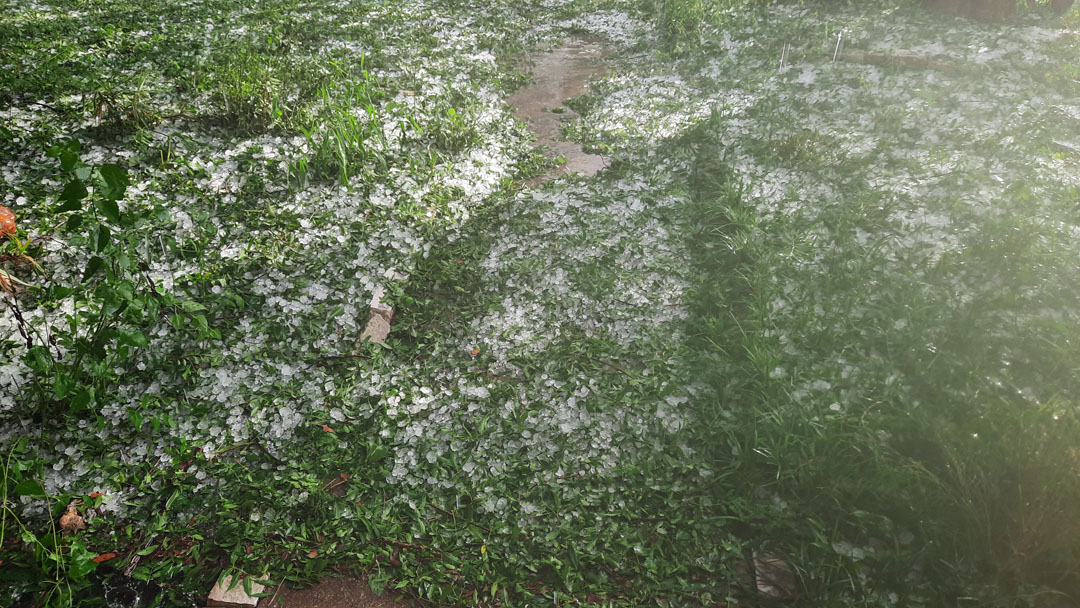
It took less than 30 minutes to shred, sever, and slash years of established plants and rip the leaves off trees, now almost denuded, when a sudden furious rain and hail storm (a microburst) whipped through my neighborhood on May 28.
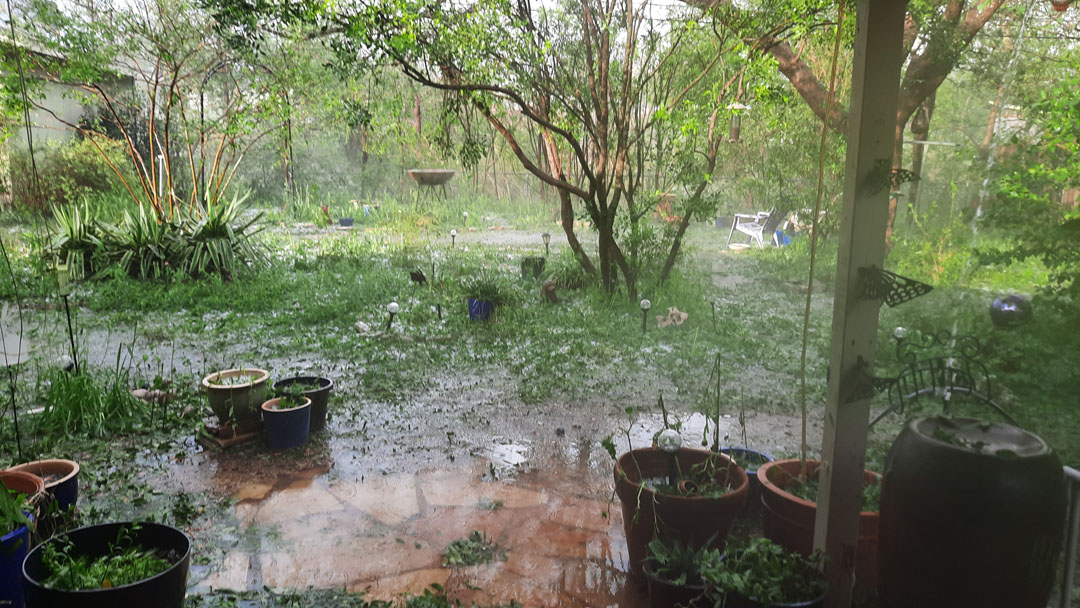
Then the sun came out, but the plants that had been feeding goldfinches, butterflies and bees were mere skeletons. Most will grow back just fine, though their shade is gone as we head into summer’s heat.
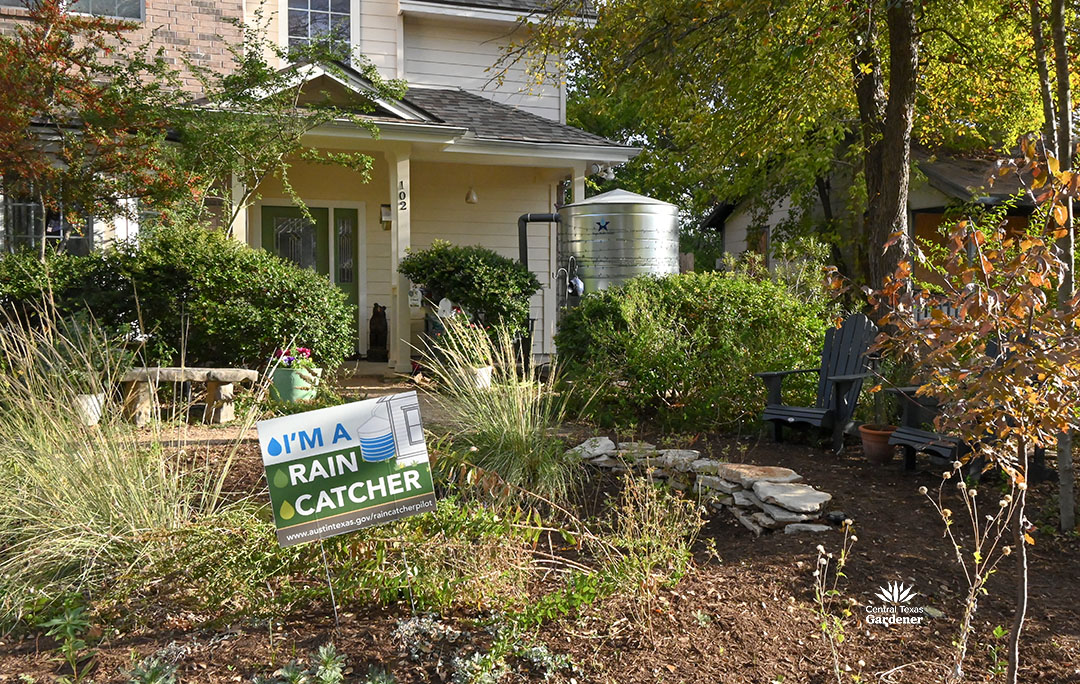
It’s ironic that I’d put the finishing touches on this blog for our new garden video this week: rain catcher designs through rain gardens and rain tanks. However, these designs are not geared for intense flash flooding or the kind of storm that just came through.
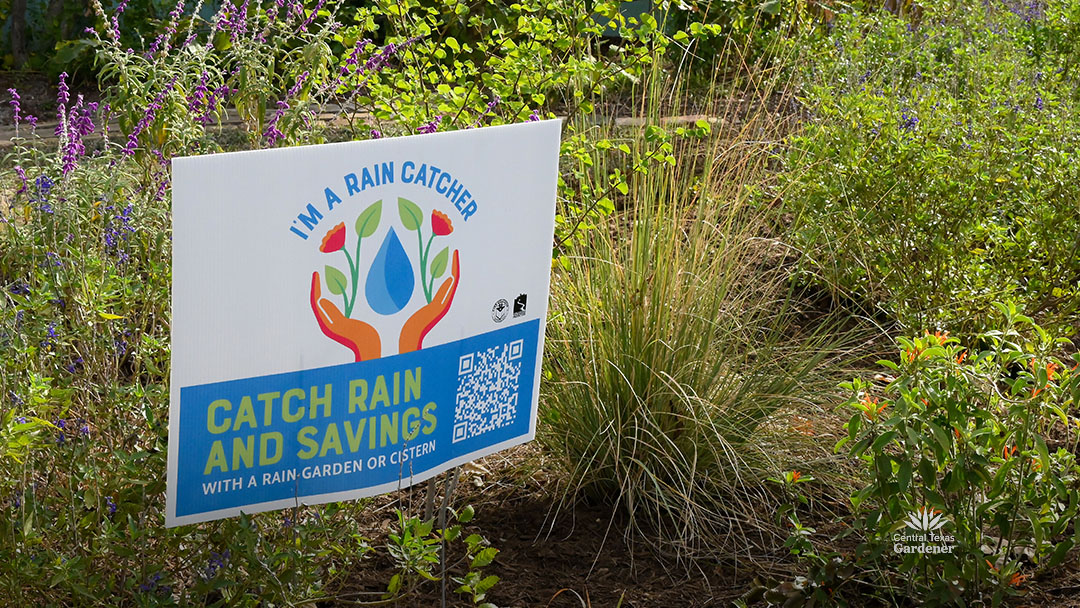
To illustrate how neighborhoods can work together in rain catchment designs in normal rainfall, the City of Austin initiated the Rain Catcher Pilot Program to integrate and leverage existing Green Stormwater Infrastructure programs and resources.

In a collaboration with Urban Patchwork designer Paige Oliverio, they worked with gardeners, including Larry and Jessica Morse, to design rain tank systems and rain gardens with beautiful native and adapted plants for pollinators. On an autumnal-like December morning, we visited two of the front yard gardens.
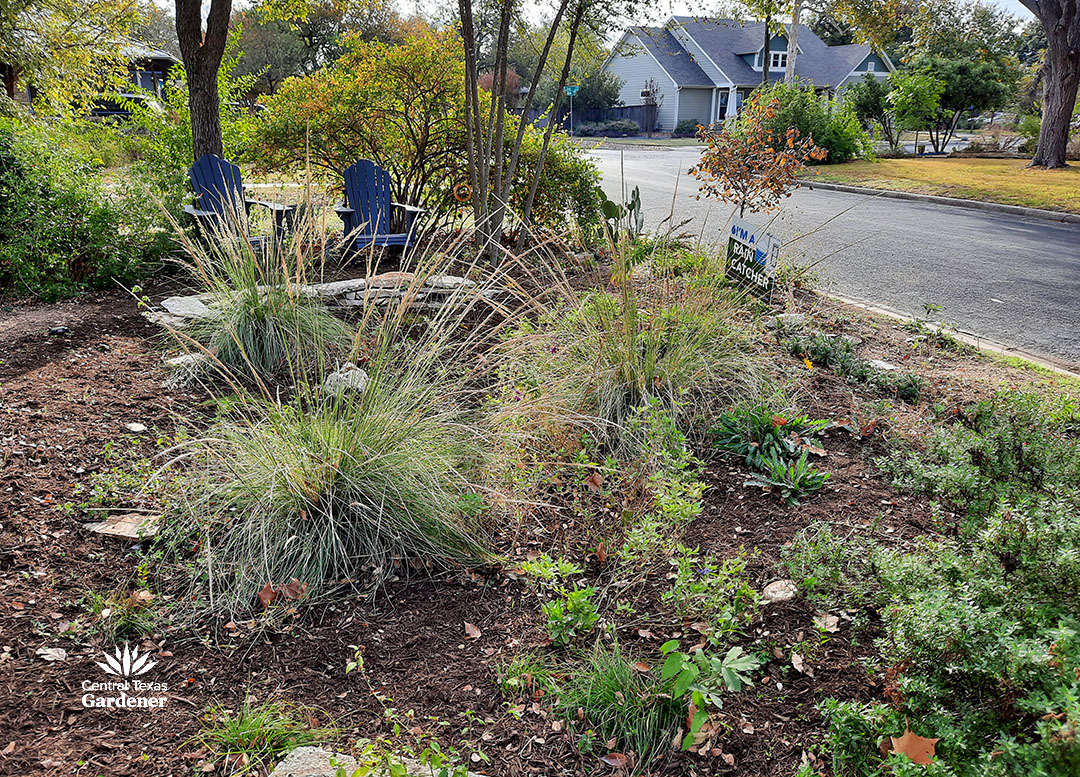
Basically, a rain garden is simply a depression in the ground, generally 6-12” deep. Scooped-out soil and mulch form berms to contain the basin (swale). “When we remove some of this square footage of just the lawn, we are doing a lot to help revitalize the soil in that space. Healthy soil is going to hold a lot more water, instead of just running right off into the street. And what happens is we end up with a cooling effect in the summer,” Paige explains.
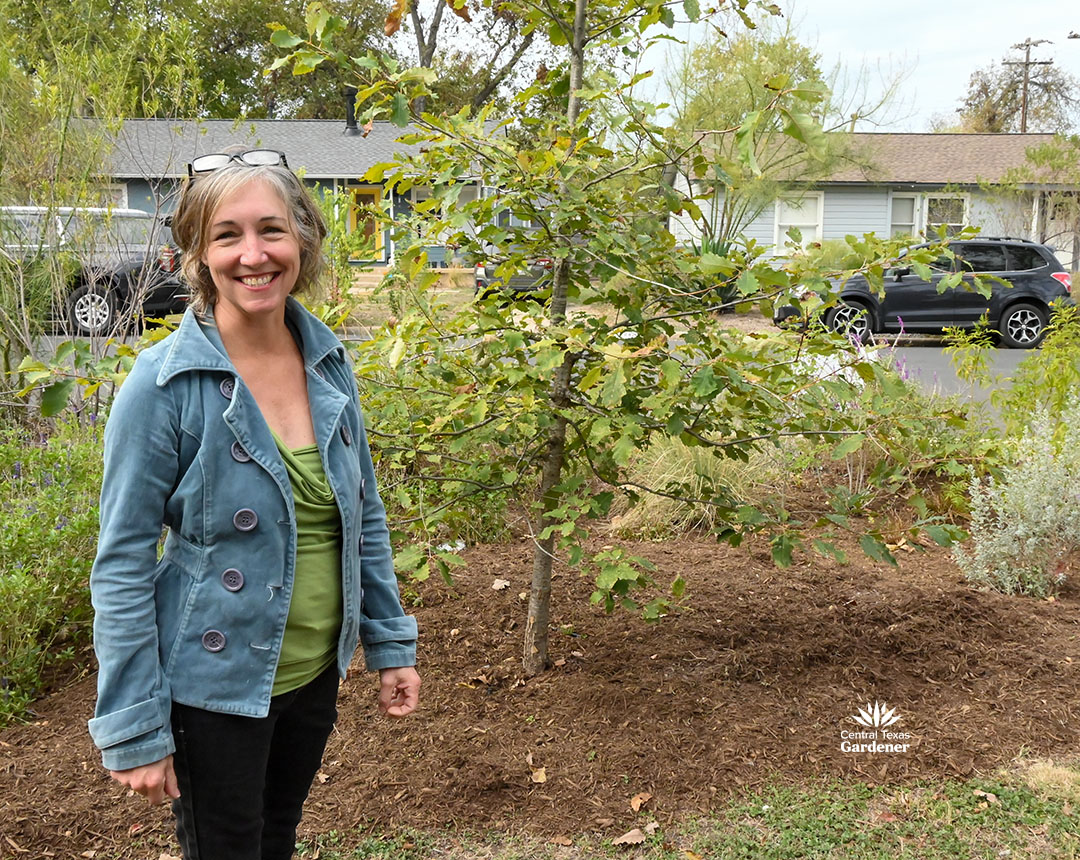
In Central Texas, rain patterns can mean 1 – 3” of rain all at once (like on Memorial Day weekend) and then no rain for weeks or even months. A rain garden basin absorbs and filters that rapid rainwater runoff. Rain garden plants don’t mind temporary flooding between dry times. Here’s a list of rain garden plants and designs—geared for schools, but helpful for everybody.
Although the pilot program is on hold for now, the concepts have been part of the city’s Grow Green and Green Stormwater initiative for many years.

Watch CTG’s 2017 interview about rainwater berm and swale designs with Jessica Wilson, Education Manager, Watershed Protection.
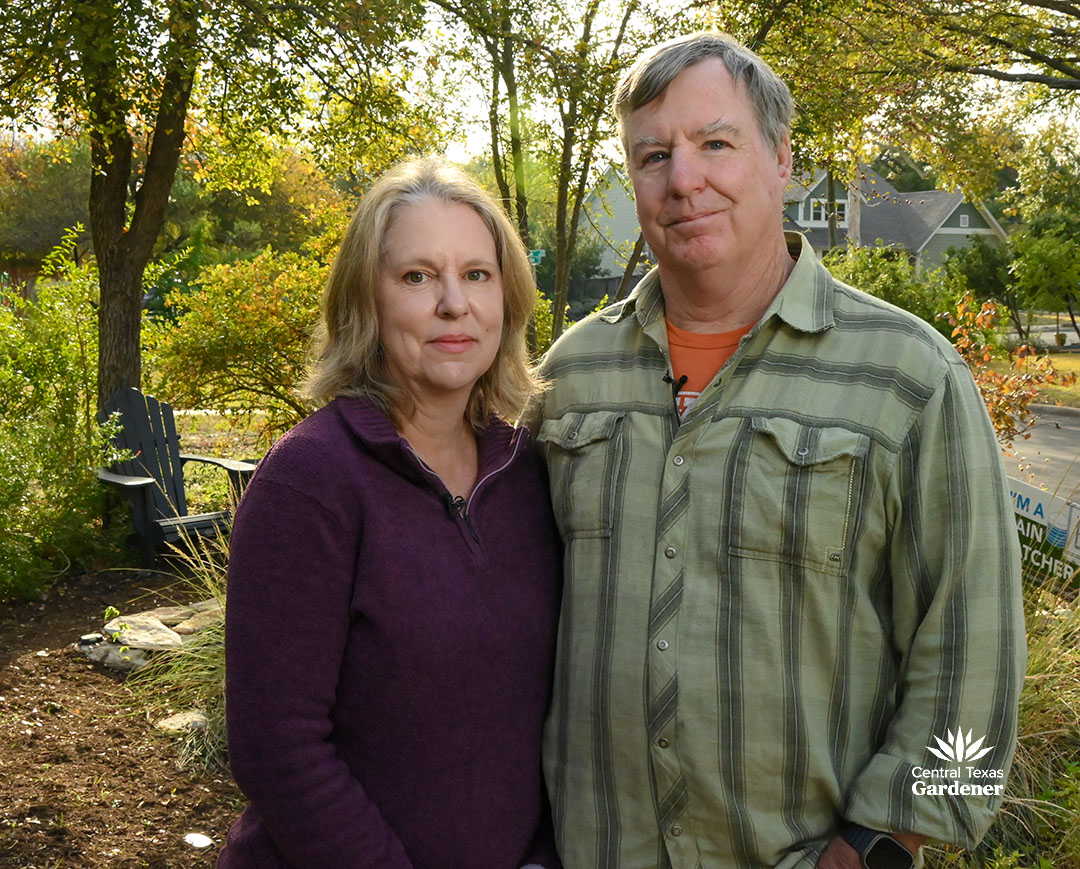
Gardening for birds and insects has always mattered to Jessica and Larry. “20 years ago or more, I actually put in a complete xeriscape with native plants in the front yard,” Jessica tells us. “And as we were having more difficulty with flooding, I heard about this program and I thought it would help me have water for all my native plants, and it would also help with rain mitigation, flood mitigation for me and for the neighborhood.”
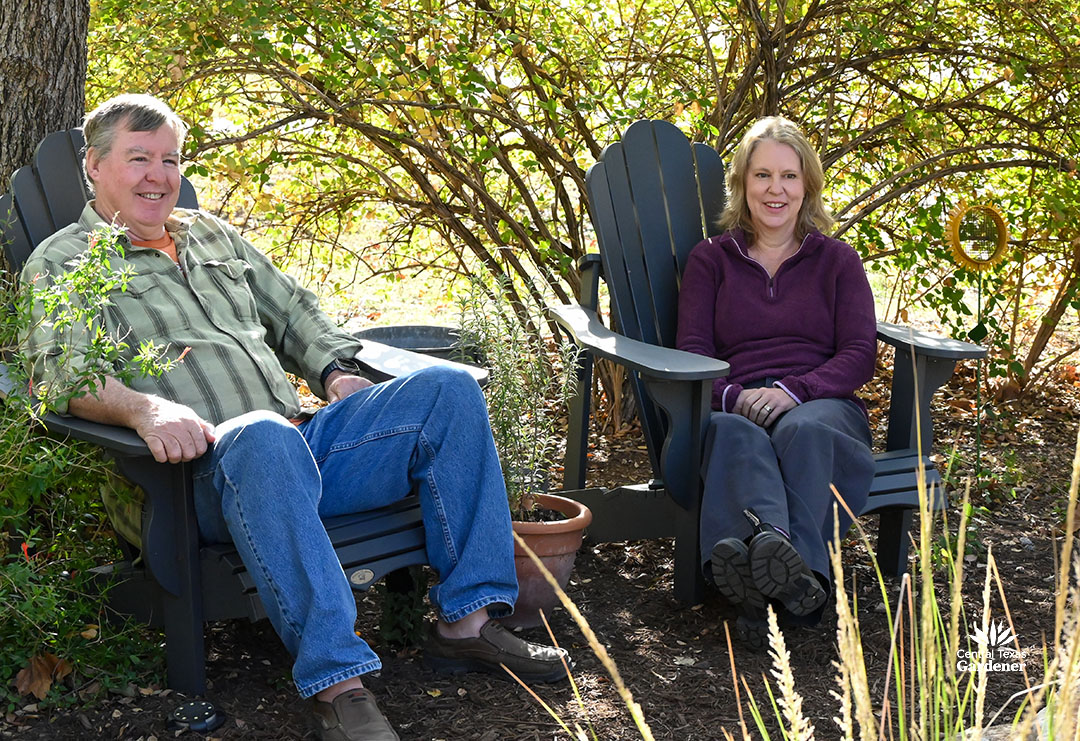
They planted their rain garden in fall 2023, including deep-rooted grasses like Lindheimer muhly that help infiltrate water, and pollinator perennials like Engelmann daisy. I spotted bluebonnet and standing cypress seedings among the many perennials. Once established, these plants get by on little irrigation, but the 1000-gallon rain tank at the front porch gives them a boost when things are dry.
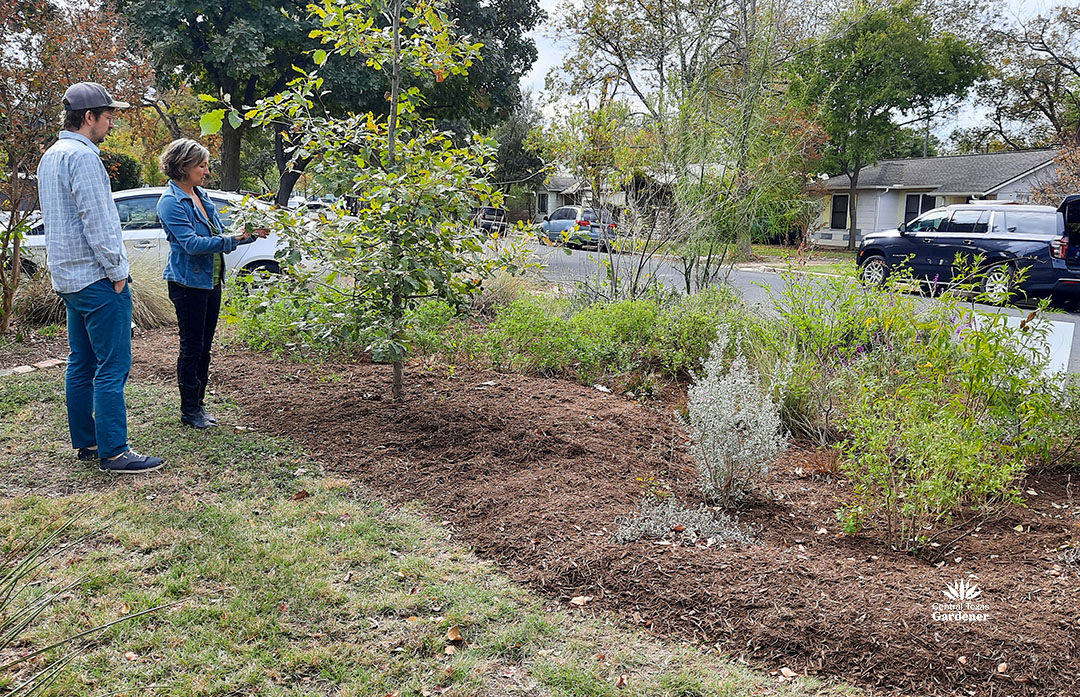
Paige meets with another owner, Graham Emmons, who planted his rain garden in spring 2024. Not even a year old, already plants are rapidly growing, including a new Monterrey oak through TreeFolks’ NeighborWoods.
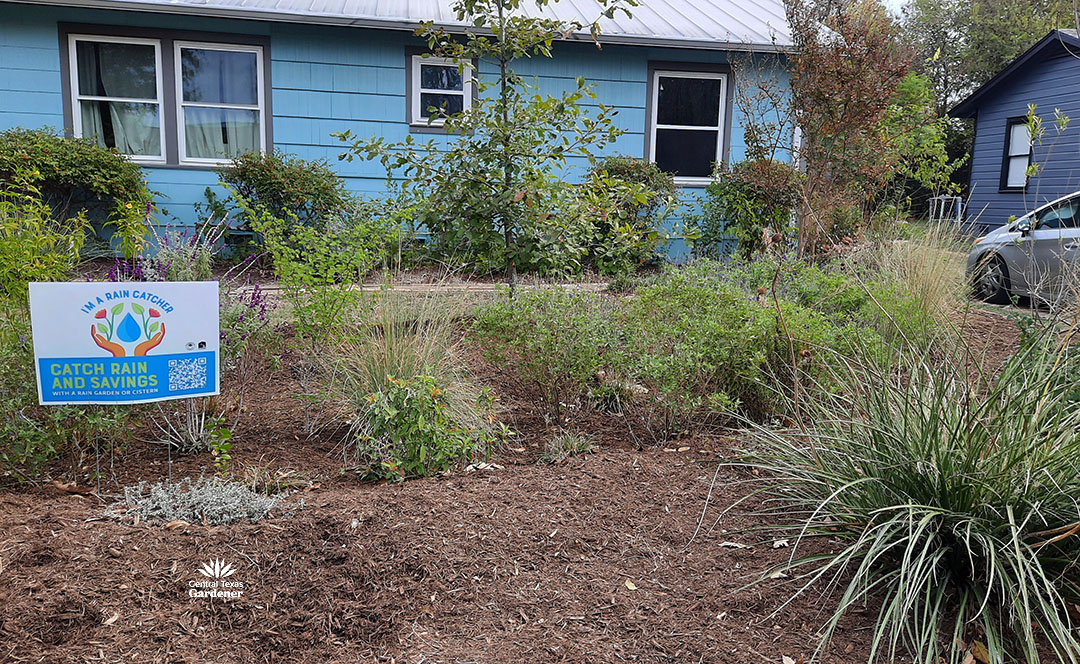
Plants can be native or adapted. Graham’s rain garden contains esperanza (Tecoma stans), Mexican bush sage, ‘Henry Duelberg’ salvia, Mexican honeysuckle, anacacho orchid, Lindheimer muhly, sedges, herbs, a cenizo and that young Monterrey oak.
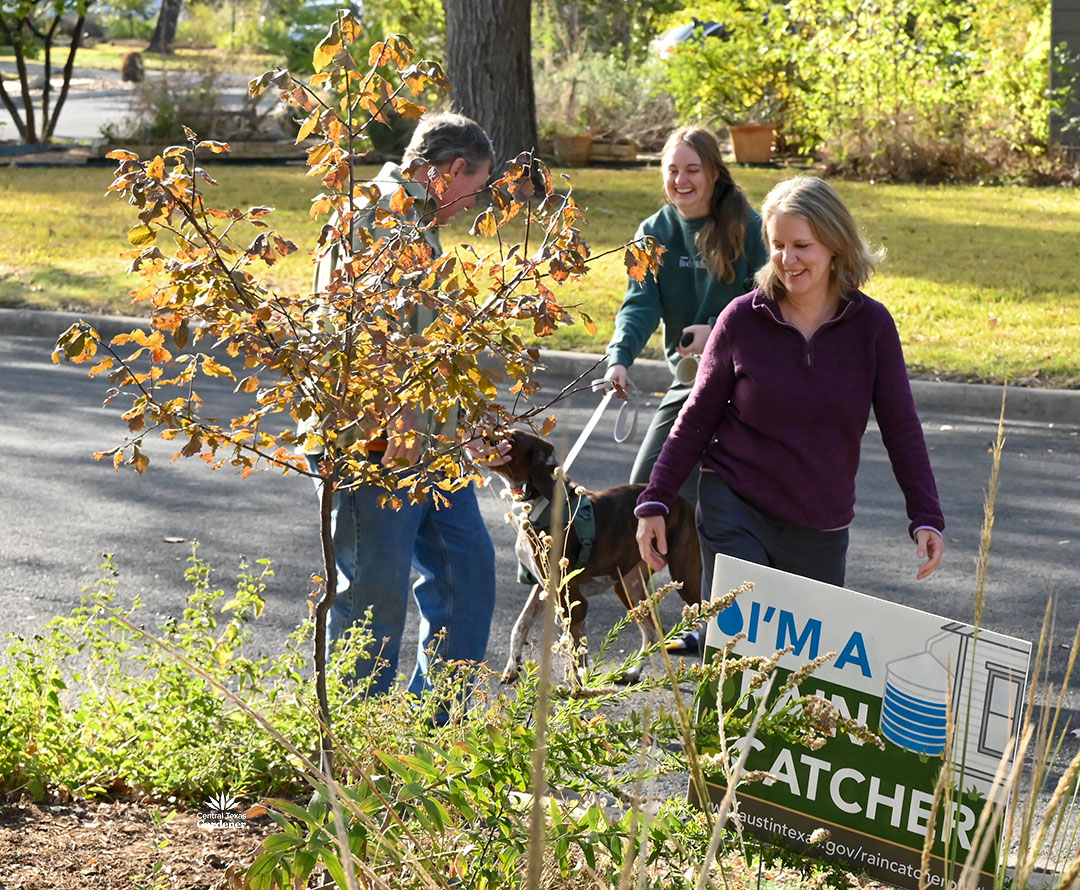
For Jessica and Larry, the garden’s simply fun to watch as the seasons and the wildlife change. Jessica tells us: “The grasses are blowing in the breeze, and we’re next to the street, and we have people come up and ask us about this unusual garden we have in our front yard.”
Thank you for stopping by! Linda
tags:

